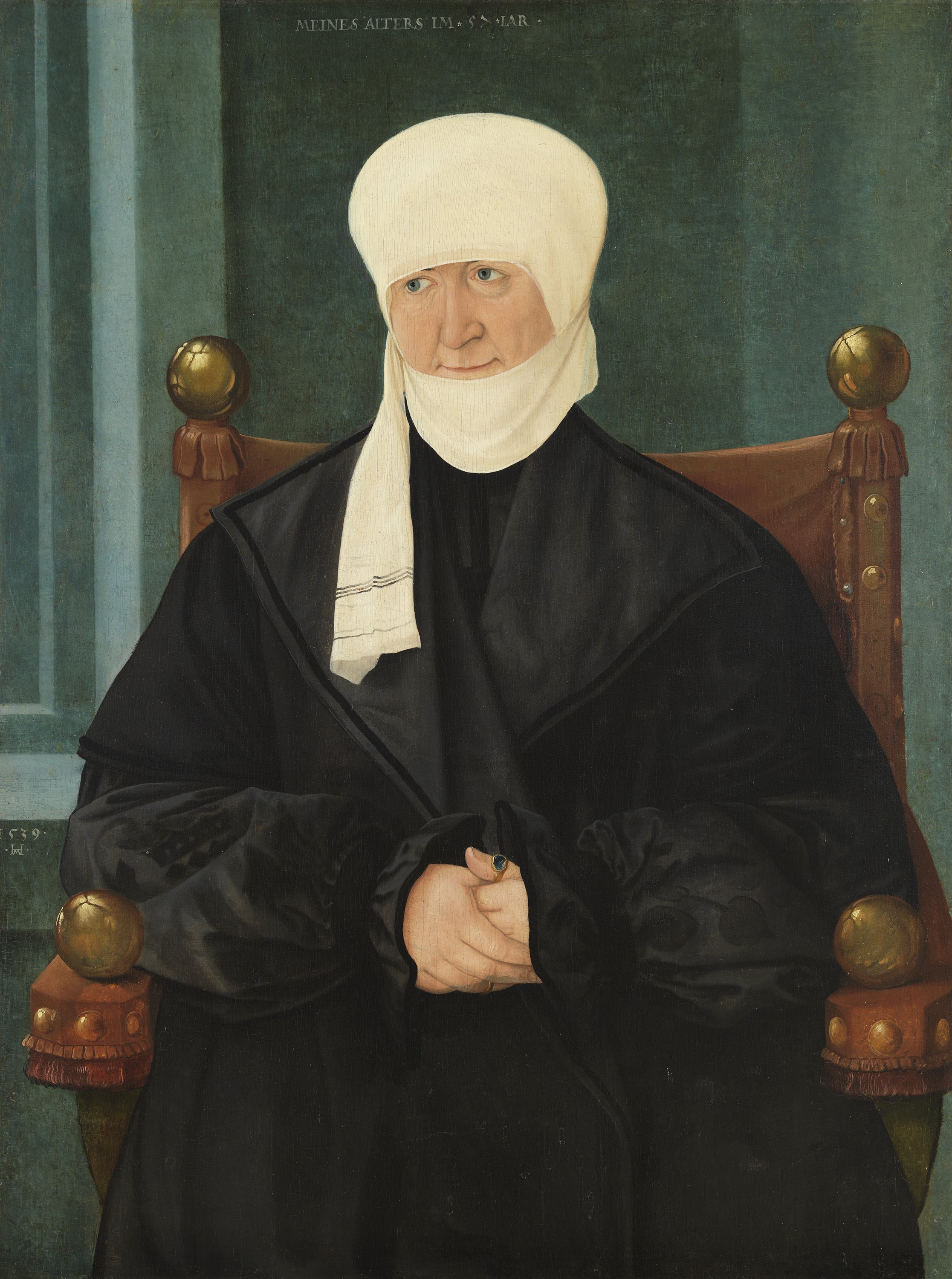Portrait of a Woman aged Fifty-seven
1539
Oil on panel.
71 x 53.5 cm
Thyssen-Bornemisza Collection, on deposit at the Museu Nacional d'Art de Catalunya (MNAC)
Inv. no.
295
(1957.1
)
Not on display
Level 2
Permanent Collection
Level 1
Permanent Collection
Level 0
Carmen Thyssen Collection and Temporary exhibition rooms
Level -1
Temporary exhibition rooms, Conference room and EducaThyssen workshop
This panel was in the collection of Count Tryszkiewicz then in the château de Birre in France. After that it was with Newhouse galleries in New York in 1955. Two years later it was with Frederick Mont in New York from where it was acquired for the Thyssen-Bornemisza collection. In good physical condition, the painting, like many others in the Collection, was transferred from its original support to the present one for reasons unknown and at an unknown date.
After the death of Barthel Beham, Hans Mielich was the most popular portraitist in Munich. He initially trained in the family circle, possibly with his father Wolfgang, and continued his studies with Albrecht Altdorfer in Rastisbon. Altdorfer’s use of colour influenced his own approach. Mielich expanded his knowledge of art on a study trip to Italy and worked for Dukes Wilhelm IV and Albrecht V of Bavaria.
This portrait of an unknown sitter is signed and dated by the artist and was executed two years after his trip to Italy. Mielich used a plain interior in order to focus all the attention on the model. Seated in a frontally positioned chair, she slightly turns her head to our left. The simplicity of the setting is echoed in the plain clothes in which her elevated social status is reflected in various details such as her wide, ribbed lapels and the ruched sleeves with their discreet print. The white headdress that covers her head, forehead and chin terminates on the left with a long band that further focuses our attention on the face. The woman’s physical appearance is conveyed with a high degree of realism and Mielich focuses on her heavy eyes, wrinkles, cheeks and distinctive mouth as well as her state of mind, conveying a sense of dignity and benevolence.
A portrait of an unidentified male sitter from the collection of J. H. van Heek on display in the Stiftung Huis Bergh in‘s-Heerenberg has been proposed as the pair to this one. The elderly sitter is depicted in a chair that has finials in the form of metal balls that reflect the light and metal studs similar to this one. The background is also similar but the man has most of the window behind him, an element only visible on the far left of the present panel. On the other hand, the panel in the Van Heek collection is much smaller than this one, particularly with regard to its height. Lübbeke referred to another pair of portraits by Mielich in the Alte Pinakothek in Munich depicting Andreas and Apollonia Ligsalz of 1540 in which the artist plays with the slight asymmetry in the backgrounds and the position of the models.
Mar Borobia
After the death of Barthel Beham, Hans Mielich was the most popular portraitist in Munich. He initially trained in the family circle, possibly with his father Wolfgang, and continued his studies with Albrecht Altdorfer in Rastisbon. Altdorfer’s use of colour influenced his own approach. Mielich expanded his knowledge of art on a study trip to Italy and worked for Dukes Wilhelm IV and Albrecht V of Bavaria.
This portrait of an unknown sitter is signed and dated by the artist and was executed two years after his trip to Italy. Mielich used a plain interior in order to focus all the attention on the model. Seated in a frontally positioned chair, she slightly turns her head to our left. The simplicity of the setting is echoed in the plain clothes in which her elevated social status is reflected in various details such as her wide, ribbed lapels and the ruched sleeves with their discreet print. The white headdress that covers her head, forehead and chin terminates on the left with a long band that further focuses our attention on the face. The woman’s physical appearance is conveyed with a high degree of realism and Mielich focuses on her heavy eyes, wrinkles, cheeks and distinctive mouth as well as her state of mind, conveying a sense of dignity and benevolence.
A portrait of an unidentified male sitter from the collection of J. H. van Heek on display in the Stiftung Huis Bergh in‘s-Heerenberg has been proposed as the pair to this one. The elderly sitter is depicted in a chair that has finials in the form of metal balls that reflect the light and metal studs similar to this one. The background is also similar but the man has most of the window behind him, an element only visible on the far left of the present panel. On the other hand, the panel in the Van Heek collection is much smaller than this one, particularly with regard to its height. Lübbeke referred to another pair of portraits by Mielich in the Alte Pinakothek in Munich depicting Andreas and Apollonia Ligsalz of 1540 in which the artist plays with the slight asymmetry in the backgrounds and the position of the models.
Mar Borobia









